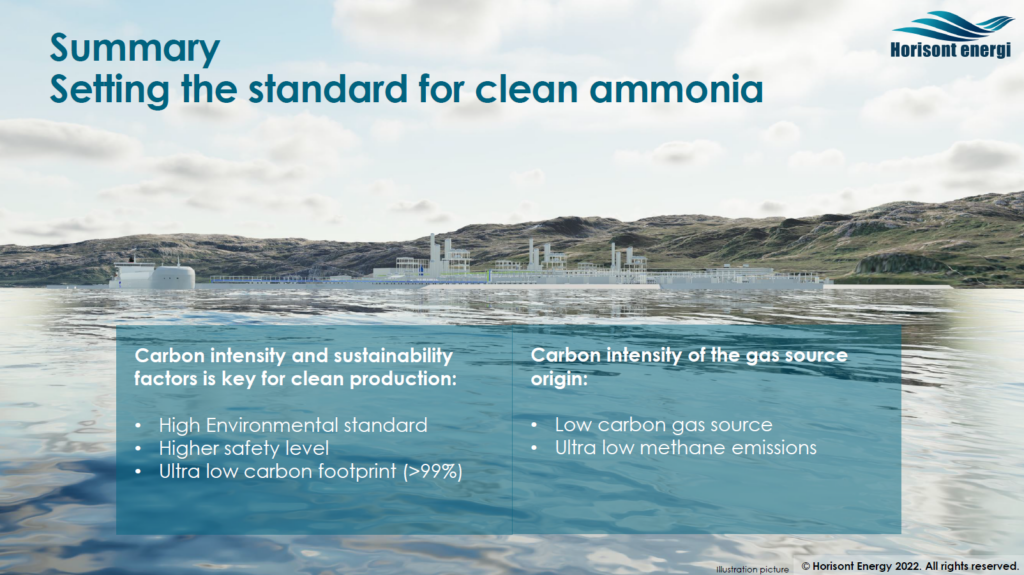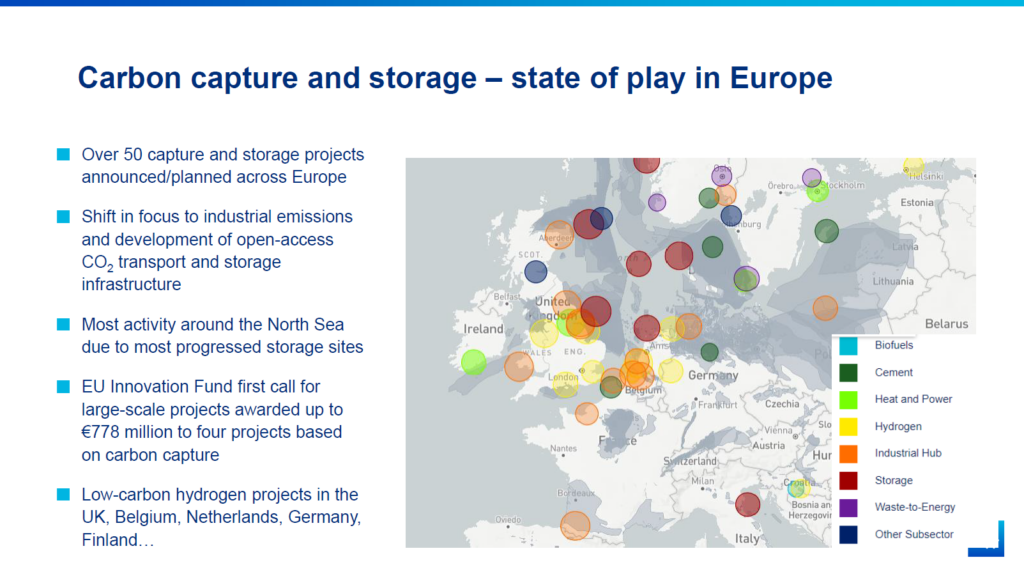Unlocking CCS ammonia potential in Europe
By Kevin Rouwenhorst on May 19, 2022
The first webinar of our new series Ammonia Project Features revealed some interesting details about current and future low-carbon ammonia projects in Europe. Bjørgulf Eidesen (CEO at Horisont Energi) and Toby Lockwood (Technology and Markets Manager, Carbon Capture at Clean Air Task Force) discussed the planned Barents Blue project and what levers need to be pulled to unlock significant CCS potential throughout Europe. The recording is publicly available via our Vimeo channel (you can also download the speaker presentations).
Barents Blue project

Bjørgulf Eidesen (Horisont Energi) believes the Barents blue project can set the standard for low-carbon ammonia production. The natural gas-based ammonia plant is based on ATR (autothermal reforming) technology for hydrogen production, and is equipped with CCS (carbon capture and storage). About two million metric tonnes of CO2 per annum will be sequestered from the plant at the Polaris sequestration project (being developed with Equinor and Vår Energi). Horisont aims for the plant to produce one million metric tonnes of ammonia per year from 2026. All technologies involved are mature and – as it currently stands – the plant will be competitive with other fossil-based ammonia plants from day one of operations.
The scope 1 CO2 emissions from the plant are low due to the high CO2 capture rate from ATR-based hydrogen production design – about 99% according to IRENA (click to download report). Upstream methane emissions also need to be minimized for this ammonia to be considered low carbon, which appears to be the case for the Barents Blue project. But next to CO2 equivalent emissions, other sustainability criteria need to and will be met, such as the local environmental footprint, noise/light pollution levels and water use requirements.
CCS projects in Europe – untapped potential

Toby Lockwood (CATF) then detailed the current status of CCS (carbon capture and storage) in Europe. Especially in Northern Europe, significant CCS projects are under consideration for low carbon fossil-based hydrogen production.
According to CATF, Europe has a vast technical CCS capacity of 500 Gt. For comparison, global ammonia production currently emits about 0.5 Gt CO2 (according to the Royal Society), showing that the available CCS capacity is not limiting. However, market uncertainty has resulted in slow development of CCS locations. In fact, only 50% of the required CCS capacity by 2030 is currently developed. Consistent legislation and policies on low carbon hydrogen in the near term can help to accelerate the realization of CCS facilities.
Setting a high standard
A main discussion point from the webinar was ‘setting a standard’ for low carbon fossil-based ammonia production. With mature technology and transparency on CO2 footprint & other sustainability indicators, Horisont Energi aims to set an ambitious new standard for low carbon fossil-based ammonia plants at other locations. As indicated by Toby, slight variations in geology exist between CCS locations, and facilities will operate in a similar manner. Thus, best practices can be translated easily from location to location in Europe. In the outlook for the next 5 to 10 years, Bjørgulf and Toby stressed that success means an accelerated roll out of these low-carbon projects, and regulatory standards to support the growing industry.
Next up in the Ammonia Project Features series is another look at low-carbon, fossil-based ammonia. But this time we travel to North America, where Blake Adair (Nutrien), and Amgad Elgowainy (Argonne National Lab) will take us through the opportunities and challenges across the Atlantic. Join us next week on the 24th of May at 2PM EST for a great discussion.